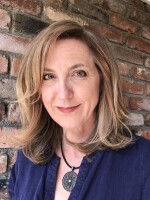Today, the stand-alone wedding chapel is an iconic feature of the Nevada landscape. But the state was easing the path to matrimony long before you could hire Elvis to serenade you through your wedding vows. We join professional historian Alicia Barber for this segment of Time & Place.
Way back in 1897, California kicked things off by passing a law that prohibited remarriage within a year of getting a divorce. That move prompted impatient lovebirds to cross the border to Nevada, where a person could get divorced and remarried the very same day.
California gave another boost to Nevada’s budding wedding industry in 1927 by instituting a mandatory three-day waiting period between the issuing of a marriage license and the wedding ceremony. Known as the “anti-gin law,” the Prohibition-era requirement was intended to prevent hasty unions fueled by overindulgence in the hooch. But Nevada opened its arms to these couples, too, offering marriage licenses on demand, with no waiting period, no blood tests, and no medical exams of any kind.
Until the 1940's and 1950's, couples intent on a quick Nevada wedding would generally tie the knot in a judge’s chambers or in the office of a justice of the peace. But by mid-century, Reno’s appeal as a destination for both weddings and honeymoons had grown considerably, and the time seemed right to offer full-service wedding ceremonies in environments that were a bit more festive.

First on the Reno scene was the Park Wedding Chapel, opened in 1956 in a converted home directly across Virginia Street from the Washoe County Courthouse. A few years later, an Oregon minister named George Flint arrived in town and later recalled what inspired him to open the Chapel of the Bells on West Fourth Street, which was then U.S. Highway 40.
“When I came here in the summer of 1961, I was impressed with Reno," Flint remembers. "And when I got here and saw this little wedding chapel my sister worked in, which was out on West Fourth, there was only one other one, which was called the Park Chapel. And I said to my wife, ‘You know, this would be good for us. I’ve got a background in ministerial effort and endeavor and religious things. I’ve got a pretty solid background in photography.’ And I said, ‘I think those two things would work together. It’d be fun to get into this business.’”
By 1970, Reno had thirteen wedding chapels, and by the early eighties the number peaked at about 20. Only a handful of the city’s freestanding chapels remain today, but like the Chapel of the Bells on West Fourth Street, those that have survived continue to fill a niche for brides and grooms seeking a quick and affordable wedding, with a slice of vintage Nevada on the side.
For more on Reno’s wedding industry and chapels, visit Renohistorical.org. Audio for this segment was provided by the Special Collections Department at University of Nevada, Reno Libraries.






